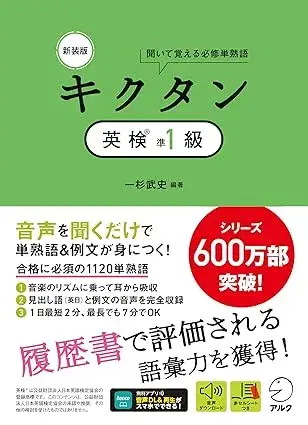
日本では古くから、お正月や何かおめでたいことがあったときに、お餅を用意したものです。子どもの頃、イベントでお餅つきを見たことがあるものの、いざ、自分がついてみるように言われたら・・・何をどうしたらいいのかよく分からない、という人も多いのではないでしょうか。そこで、臼(うす)と杵(きね)でつく、昔ながらのお餅つきを見てみましょう!
目次
臼と杵でついた餅と、機械でこねた餅の違いは?
What's the difference between mochi made with a mortar and that made with a machine?
餅つきの流れを見ていこう

Rice cake, mochi, is now usually only made for special celebrations such as New Year, but it used to be eaten year-round.
To make rice cake, mochi, steam short-grain japonica glutinous rice, mochigome, and pound it while it's hot using a rice mortar, or usu, and a pestle, or kine. A mochi pounding machine kneads, rather than pounds, the rice, and while the finished product seems to be the same as mochi made with an usu and kine, it is actually very different. Mochi made with a machine becomes very soft, has no body, contains a lot of air bubbles and easily melts in soup.
Let's take a look at how to prepare mochi by pounding in the traditional way.
日本では、新年を迎えるなどの祝い事のときに餅を用意しますが、かつては1年中よく食べられていました。
餅は、普通の米よりも粘り気の強いうるち米(もち米)を蒸し、熱いうちにきねなどでついて作ります。餅つき機では、へらで餅を練り上げるため、一見ついたときと同じように粘りが出つつも、気泡が多く含まれて柔らかくなり過ぎ、コシがなく、汁物の中では溶けてしまうなど、臼と杵でついたときとは大きく違います。
では、伝統的な臼と杵でお餅をつくときの準備を見てみましょう!
まずは、10人前の準備から
前日の準備
【Preparation on the day before the rice cake pounding, or mochi-tsuki】
1. Wash 1.4 kilograms of sticky rice and soak it in water.
2. Pour water into the wooden rice mortar and put the wooden pounder into a bucket filled with water to avoid the wood cracking and the rice getting into the wood cracks.1. 前日にもち米1.4キロをといで、水に漬けておきます。
2. 臼には水を張り、杵はバケツなどに入れて水に浸します。これで、木が割れたり、餅が木に入り込んだりすることが防げます。
餅つき前の準備
【Mochi-tsuki introduction】
1. Steam the sticky rice 45 to 60 minutes using a strong heat until it reaches the correct softness.
2. Warm the usu and kine in hot water.
3. Throw away the hot water when the rice is steamed and put the rice in the usu.1. 蒸し器で45~60分超強火で蒸し、食べてちょうどいい固さに仕上げる。
2. きねと臼をお湯で温める。
3. もち米が蒸し上がったら、お湯を捨てて拭き取り、もち米を臼に入れる。
餅つき
【Pounding mochi】
1. With all your weight focused on the kine, pound the rice.
2. Hold the kine up to your waist and bring it down several times.
3. While pounding the rice, have someone shift it around to ensure evenness. That person should keep his or her hands wet to help keep the rice moist and prevent it sticking to the usu and kine.
4. Hold the kine high above your head and bring it down. The mochi should be turned immediately after each pound.
5. Pound until the texture becomes smooth.1. 杵に体重をかけてギューッともち米をつぶす。
2. きねを腰高に持ち上げて、振り下ろす動作を2、3回。
3. 餅が均一につけるように、一人が座って水を手に含ませながらひっくり返す。杵や臼に餅がくっつくようになったら、水を付けて繰り返す。
4. 杵を高く持ち上げて振り下ろし、一度ついたらすぐに一度餅をひっくり返す。
5. 米粒がなくなり、滑らかに伸びるようになったら出来上がり。
出来たてお餅の食べ方

Put the mochi into a moistened bowl or on a pad and tear it into bite-sized pieces. Dip the mochi into azuki sweet bean paste, sweet soy powder, kinako, ground radish with soy sauce, etc. To make flat sheet-like mochi, put powdered starch on a pad and flatten the mochi with a rolling pin. Wash the usu and kine and dry them for about two days before putting them away.
お湯で湿らせたボールや板に餅を置いて、一口大にちぎってあずきやきなこをまぶしたり、醤油を入れた大根おろしなどを絡めたりして食べる。のし餅は、片栗粉などを板にまぶして、のし棒でのす。きねと臼はきれいに洗って、2日ほど干してからしまう。
冬のこの時期、いろんなイベントで登場するお餅つき。出きたてアツアツのお餅は、イベントに出て行く時間のない大人には、ちょっと懐かしいものかもしれません。立ち上るお米の香りとともに、グンと伸びる餅のコシやその歯応えもおいしさをアップしてくれます。本格的な臼ときねでついた餅は、この季節ならではの楽しみのひとつではないでしょうか。
臼と杵でついた餅はしっかりとコシが出る!
Mochi made with a machine becomes very soft, has no body, contains a lot of air bubbles and easily melts in soup because the machine kneads, rather than pounds the rice. Mochi made with a mortar is firm and becomes very elastic.
餅つき機は餅をヘラでこねて作るため、たくさんの空気を含んで柔らかくなり、汁物の中で簡単に溶けてしまいます。臼でついた餅は、しっかりとコシがあってよく伸びます。
※2017年12月28日作成、2024年1月2日更新
boocoで読める!アルクの新刊、続々登場
語学アプリ「booco」なら、アルクのベストセラー書籍200タイトル以上が、学習し放題!
「キクタン」などアルクの人気書籍800冊以上が音声対応。「読む」に対応した書籍では、本文と音声をスマホで手軽に利用できるほか、一部の書籍では、学習定着をサポートするクイズ機能で日々の復習や力試しも可能です。さらに、Plusプランに加入すれば200冊以上の書籍が学習し放題に!
boocoの「読む」機能では、次のような使い方ができます。
① 学習したいページを見ながら音声を再生できる
② 文字サイズや画面の明るさを調整できる
③ 書籍内検索ができる
※ これらの機能には一部の書籍が対応しています。

▼「booco」の無料ダウンロードはこちらから






